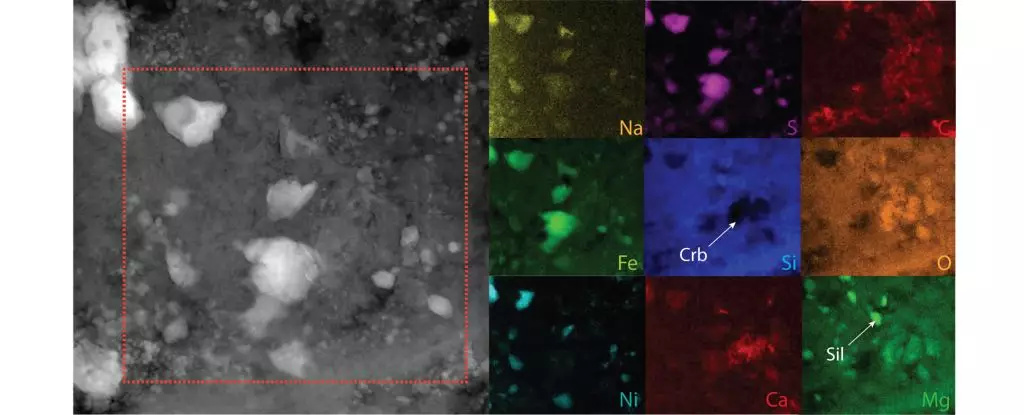The history of our Solar System dates back billions of years to the time when a disk-shaped cloud of swirling dust and gas came together to form what we see today. Throughout this immense period of time, the materials that initially made up the solar nebula have undergone significant transformations, being compacted, bombarded by radiation, and altered through various interactions. Despite these changes, researchers have managed to identify traces of primordial material that originated in the protoplanetary disk, giving us a glimpse into the early stages of our cosmic neighborhood.
In 2018, an international team of scientists made a groundbreaking discovery within an ancient meteorite that fell to Earth from space. Through careful analysis, they were able to pinpoint materials that must have originated in the protoplanetary disk, shedding light on the basic components that formed the planets, moons, asteroids, and comets in our Solar System. This finding represents a significant advancement in our understanding of the celestial processes that led to the creation of everything around us.
The Oort Cloud, a distant region encompassing icy chunks of rock, holds valuable clues about the pristine materials that shaped the Solar System. While these materials have largely remained unaltered over time, studying them has proven to be a challenge. Long-period comets originating from the Oort Cloud occasionally venture into the inner Solar System, shedding light on the ancient remnants of the protoplanetary disk.
Unveiling the Secrets of Clasts in Meteorites
Meteorites, remnants of space collisions, provide a unique opportunity to study primordial materials that have survived their journey through the Solar System. By examining meteorites like Northwest Africa 14250 (NWA 14250), researchers can identify cometary clasts trapped within the rocks, offering insights into the composition of the early Solar System. Through advanced techniques such as scanning electron microscopy and spectroscopic analysis, scientists have been able to unravel the mysteries hidden within these ancient meteorites.
A Window into the Past
The discovery of familiar clasts in meteorites from the outer Solar System and samples taken from asteroids like Ryugu suggests a uniform composition within the protoplanetary disk during the formation of the Solar System. This finding challenges previous beliefs and indicates that the isotope signature of the comet-forming region was widespread among outer Solar System bodies. These revelations provide a compelling narrative of the planetary building blocks that contributed to the intricate web of celestial bodies we observe today.
The study of ancient meteorites offers a unique opportunity to delve into the origins of the Solar System. By carefully analyzing these extraterrestrial relics, researchers can piece together the puzzle of our cosmic history and gain a deeper understanding of the processes that shaped the world around us. As technology advances and new discoveries are made, the mysteries of the Solar System’s birth continue to unfold, inviting us to explore the wonders of the universe with fresh eyes and an insatiable curiosity.


Leave a Reply